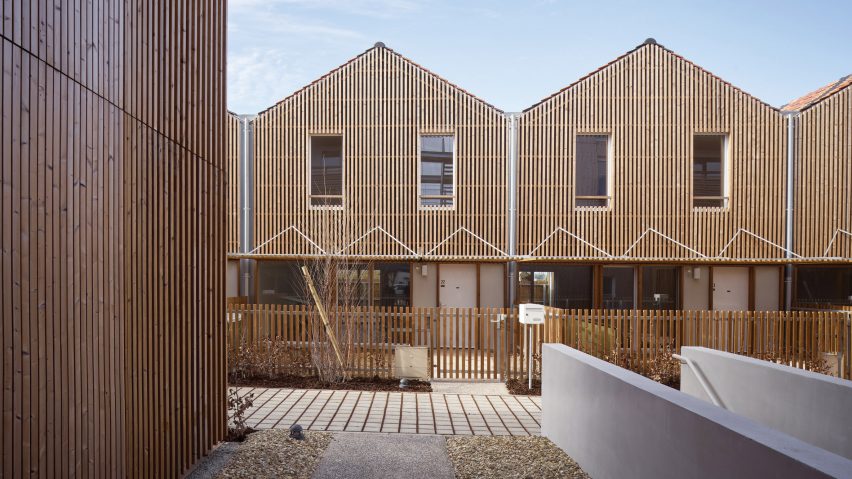This week on Dezeen, architects and governments alike bet on the future potential of wood as a construction material, with plans unveiled to build public buildings and skyscrapers from the material.
In a bid to make France carbon-neutral by 2050, president Emmanuel Macron is pushing for a sustainability law that would require at least 50 per cent of any new, state-funded building to be made from timber or other bio-based materials such as hemp or straw.
The plan was motivated by the material's use in the design of the 2024 Paris Olympics complex, where all buildings above eight storeys will be made entirely from timber.
Currently, the world's tallest timber buildings is 18 storeys high, but Alphabet's architectural subsidiary Sidewalk Labs has developed a digital model for a high-rise which, at 35-storeys high, would be the tallest of its kind.
The aim is to turn this proof of concept into a reality as part of company's redevelopment of the Toronto waterfront.
Architecture studio Generate has also announced plans to build a modular, pre-fabricated apartment block and co-working space in Boston using cross-laminated timber.
The company's CEO John Klein told Dezeen that, to his knowledge "it will be one of the most sustainable buildings in America".
The push for more environmentally-friendly construction materials has also manifested itself in London's 2020 Serpentine Pavilion design, which was unveiled this week.
The installation by South African architecture studio Counterspace will be made entirely of cork as well as un-fired, recycled bricks, which entail a fraction of the carbon emissions of a regular brick.
In technology news, Samsung has made its latest move in the smartphone arms race with the release of several new models. The Galaxy Z Flip is the brand's newest device with a foldable screen. Much like the recently re-released Motorola Razr, its 6.7-inch glass display can be folded fully in half with a "satisfying snap".
Samsung's answer to the iPhone 11 Pro, the Galaxy S20 Ultra, improves on its competitor's much-hyped trio of rear facing cameras with an additional 108 megapixel image sensor that allows for even higher resolution photographs and videos.
New images were revealed of the Tokujin Yoshioka-designed Olympic torch, which will be used to mark the beginning of the 2020 games in Tokyo.
The torch has a rose gold cylinder, which tapers out to form the five petals of a cherry blossom and is made using aluminium waste from the construction of temporary disaster housing.
Elsewhere, a scientist from the Royal Netherlands Institute for Sea Research has suggested that installing two dams made from 51 billion tons of sand in the North Sea could be a last resort in defending Europe against rising sea levels.
As well as presenting the proposal as a solution to the global climate crisis, the oceanographer hopes that it will act as a warning of things to come and a catalyst for action.
The Greek government has announced plans to install its own maritime barrier in the form of a floating wall of nets which would deter refugees from entering the country by boat.
However representatives of Amnesty International, the United Nations and the European Union have been quick to point out that the move would violate the refugees fundamental right to asylum under international law.
Popular projects and products this week included a cantilevered home in Kent, a squishy, body-positive flesh suit and an off-the-grid cabin in Upstate New York.

